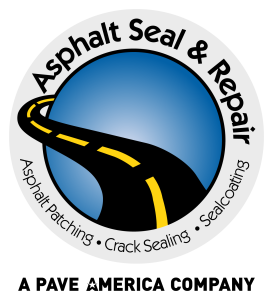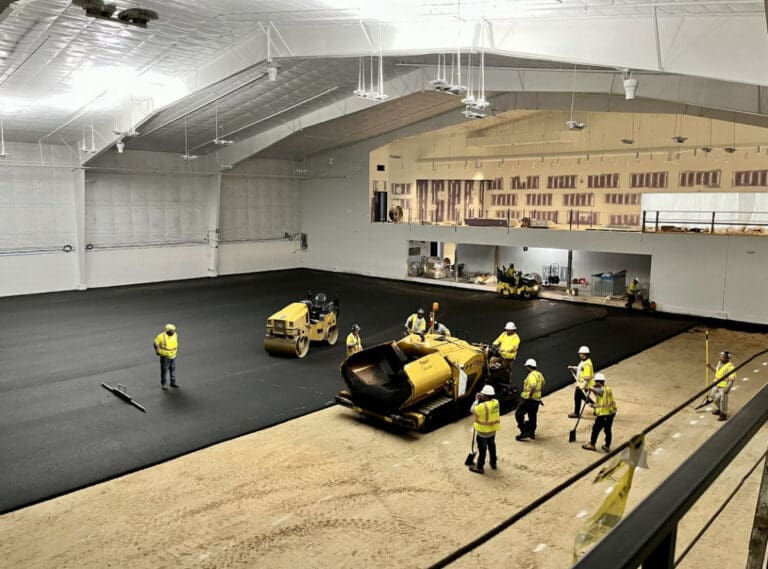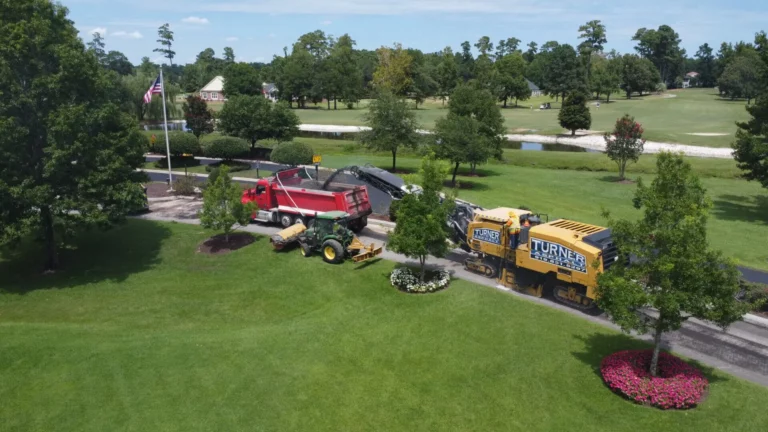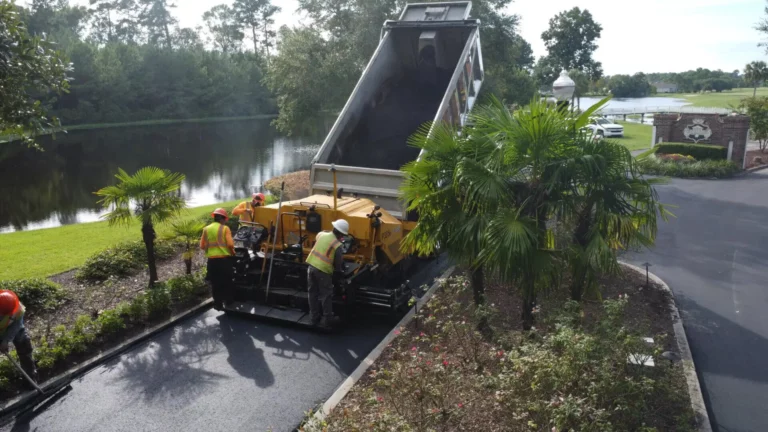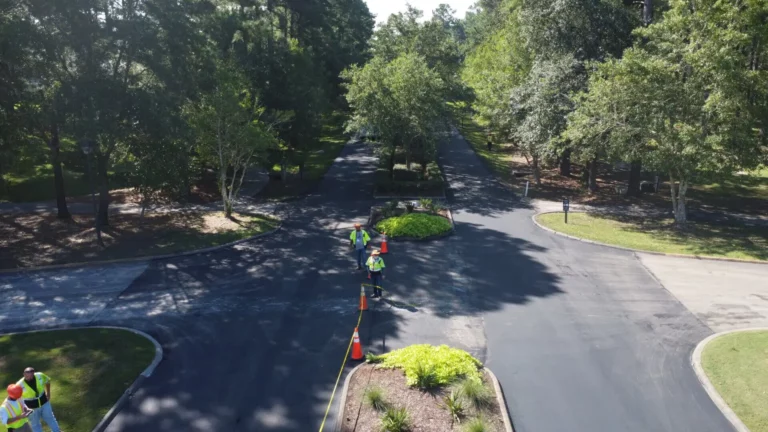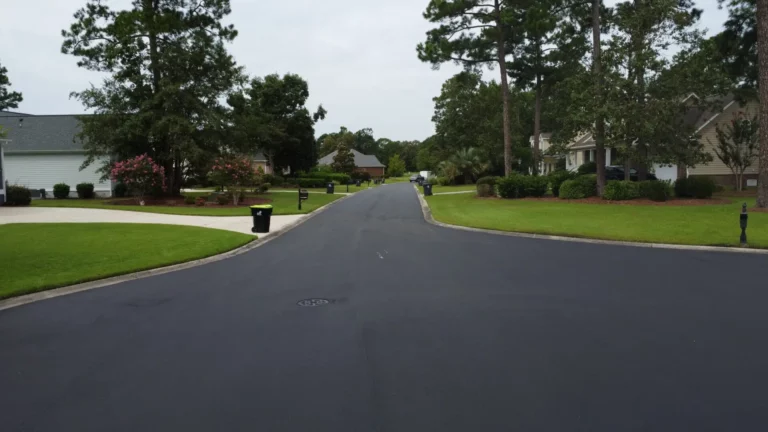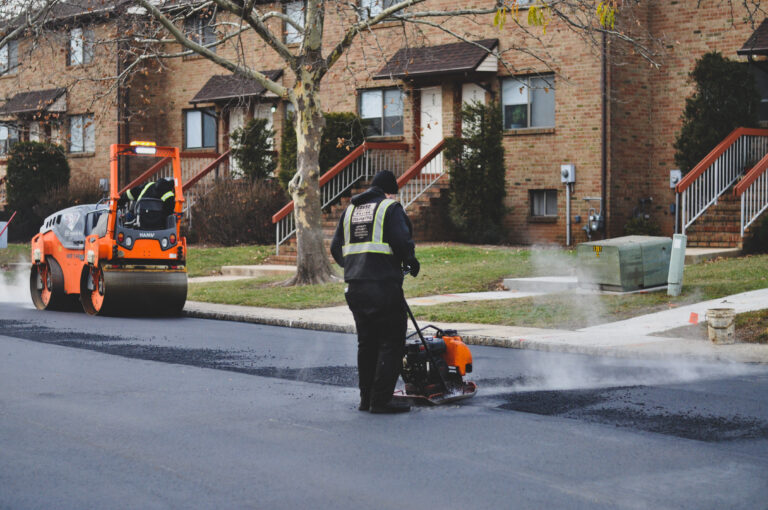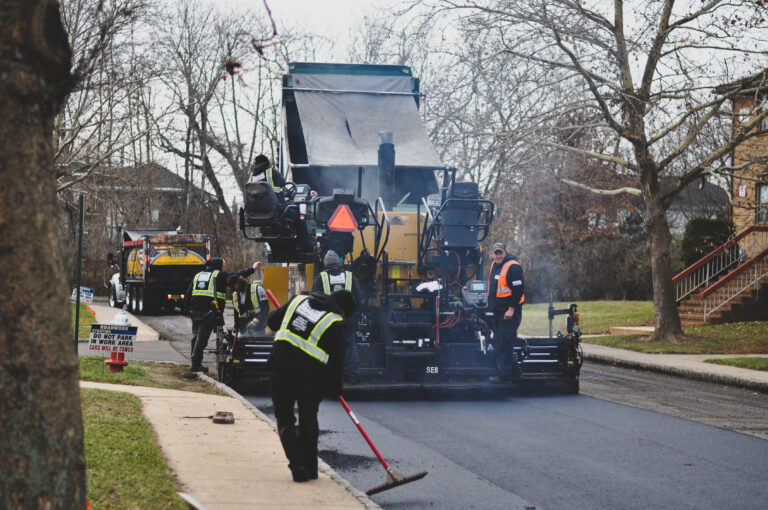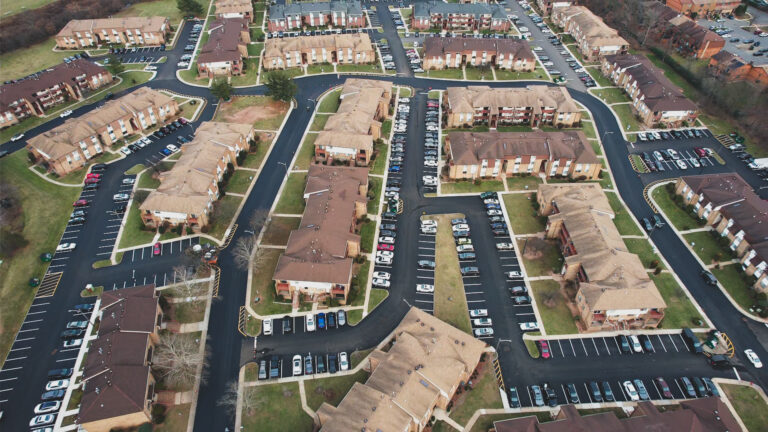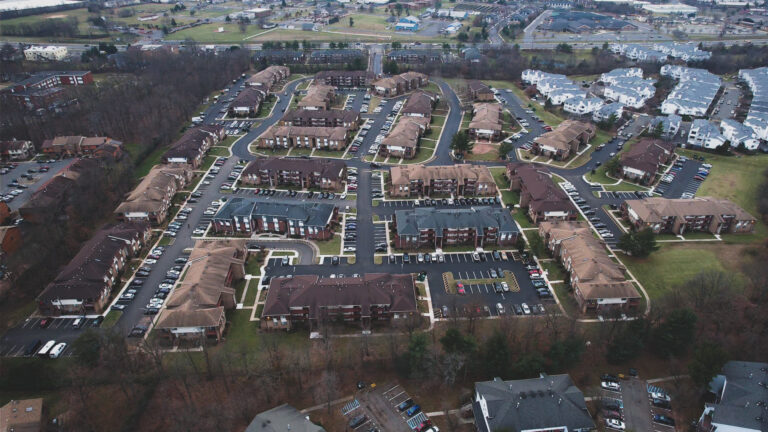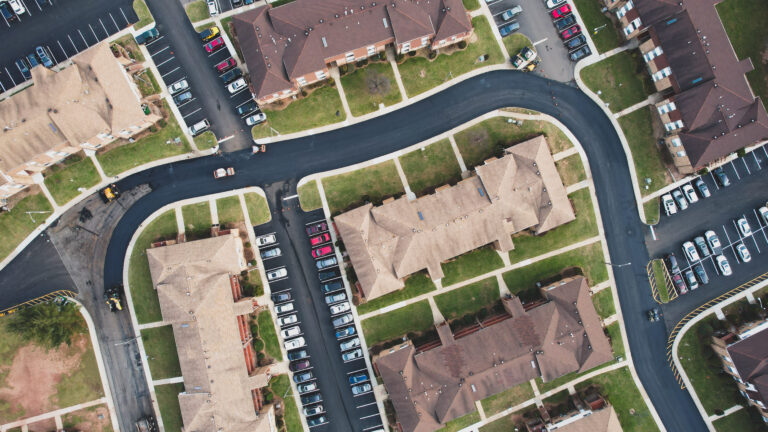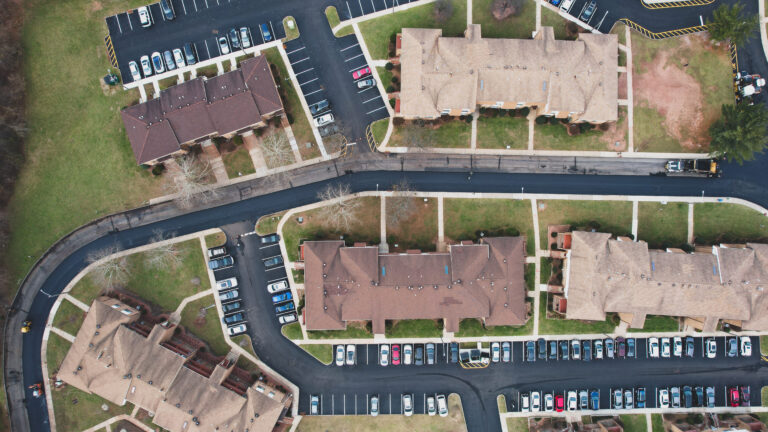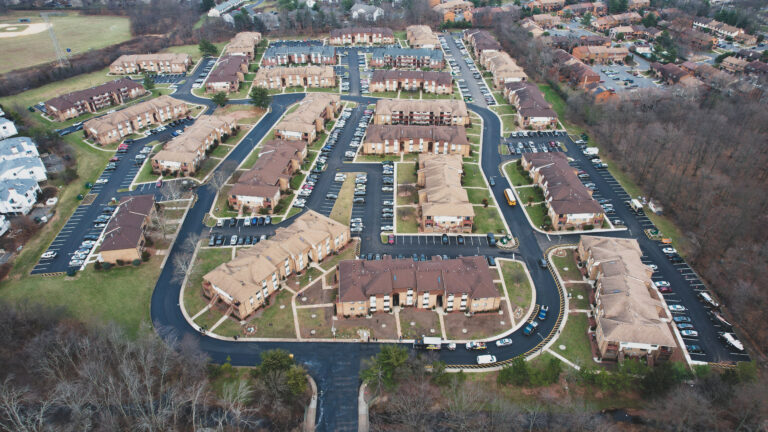Asphalt Calculator
Use our asphalt calculator below to estimate the amount of asphalt needed for your next paving project with Pave America.
Asphalt Calculator

Estimating the Amount of Asphalt Needed
Need to determine the amount of asphalt for your upcoming pavement project? Gathering the right information is the crucial first step. Accurate measurements of your project area are an essential part of this equation.
Before measuring the targeted area, look for existing blueprints. Blueprints of the area will contain the measurements you’ll need to determine the right amount of asphalt for paving. If blueprints aren’t available, you can still find the measurements yourself. Measure the space with normal measuring tools and try to break it down into simple geometric shapes. This allows you to calculate the area of each shape so they can be added together. Additionally, take measurements of structures that need to be worked around for square estimates.
Start with the width and length of the area. Better accuracy can be achieved with our asphalt calculator. By inputting the length, width, and desired thickness of the pavement into our asphalt calculator, the output gives you the asphalt needed in tons or in cubic feet/yards.
What is Asphalt Compaction?
Asphalt compaction is a process that reduces the volume of material. Compaction brings the asphalt-coated aggregate particles together to formulate stability and provide resistance to deformation while also improving its durability. Your Pave America estimator is an expert in understanding the proper application of asphalt and the appropriate compaction for your project.
Compaction needs to be taken into account when estimating the amount of asphalt you need. Numerous variables affect compaction, such as:
Variables that Affect Asphalt Compaction
- Environmental Factors
Learn More
The climate of the region plays a key role in determining what type of asphalt mix is the correct choice for the job. Certain mixes are curated to resist high temperatures and others are made for colder climates. The season you decide to pave is also a factor. Laying asphalt in the cold weather could require different specifications and considerations than other months throughout the year.
- Base Conditions
Learn More
Base type and condition can affect the stiffness and compaction in the newest layer of asphalt. Required compaction is due in part to whether the newest layer is placed on these types of bases:
- An aggregate base course
- Cold mix asphalt layer
- Subgrade soil
- Asphalt concrete
- Portland cement concrete pavement layer
The thickness of the asphalt layer also needs to be considered when it comes to compacting the mix. Thin asphalt layers are known to cool faster than thick layers.
- Mix Temperature
Learn More
One of the most important factors is the temperature of the mix. Asphalt mixes typically differ from each other by their resistance to compaction. Certain mixes are tougher to compact and others offer less resistance—moving more freely under a steel drum roller. The less-resistant mixes lose their density in the “middle-temperature zone.” As soon as the mix is subject to the front steel wheels of a roller, density is lost and susceptible to movement.
During the rolling process, the temperature of the mix is constantly changing. This is due to factors like:
- The thickness of the layer being compacted
- The temperature of the mix when it is extruded under the screed on the paver
- Air temperature
- Wind velocity
- Properties of the mix (open-graded or dense-graded)
The ease of compaction and time available for compaction is directly related to the temperature at which the mix was produced. As the mix temperature increases, so does the time available for compaction. It’s important to note limits for production temperature as too high can damage the asphalt binder.
Predicting the result of density makes arriving at an estimate more difficult due to the changing temperatures of the mix. Creating smoothness, stability, and durability of the asphalt pavement comes when these factors are properly understood.
Types of Asphalt
The types of asphalt mixes vary depending on intended use and application. The differences include the use of added aggregates and the temperature it’ll be mixed. Types include:
Hot-Mix Asphalt
Hot-mix asphalt is made by heating the asphalt binder, decreasing its viscosity. Heating of the asphalt binder also dries the aggregate to remove moisture from the asphalt before mixing the two. Hot-mix asphalt is the most common type of asphalt.
Warm-Mix Asphalt
Similar to hot-mix asphalt, warm-mix asphalt is produced at a lower temperature. By being mixed at a lower warm temperature, fewer emissions are released and fuel consumption is reduced.
Cold-Mix
Cold-mix asphalt is created without heating and is commonly used as a patching material to repair small potholes and cracks.
Porous Asphalt
Porous asphalt is specifically designed for water drainage. Commonly used in parking lots, porous asphalt helps manage stormwater runoff.
Find a Location
Partner With The Nation’s Most Trusted Asphalt Paving Company
Ready to start seeing the payoffs of asphalt pavement? Partner with Pave America, the nation’s most trusted asphalt paving company. Contact us for all of your asphalt paving needs, such as installation, maintenance, or repairs, and see your commercial property grow.








